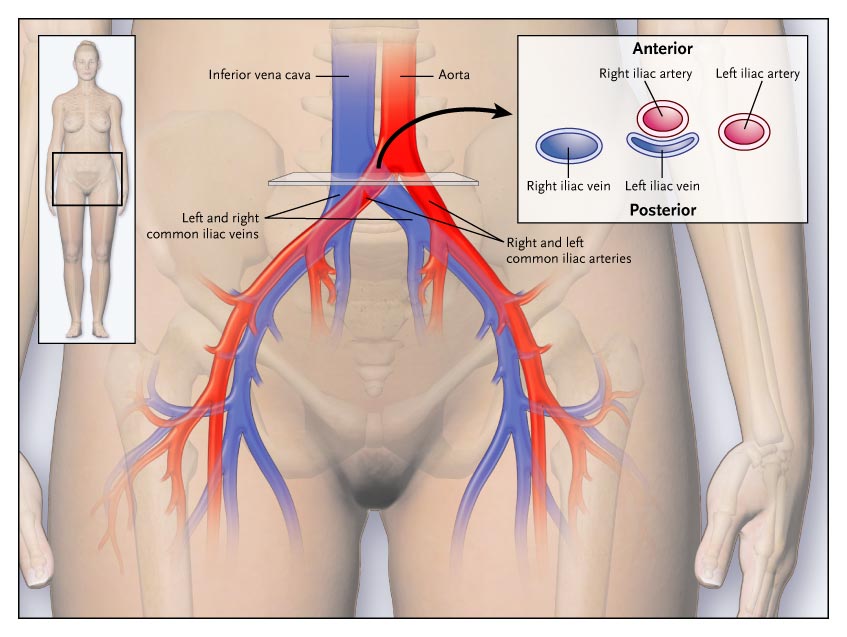May-Thurner syndrome is a rare vascular condition that can cause symptoms in your left leg or foot and, if left untreated, leads to blood clots and other complications. Find out more about this condition, its symptoms, and how it can be treated.
What is May-Thurner Syndrome?
Your arteries and veins, also called blood vessels, have an important job to do. Your arteries carry blood from your heart and into the rest of your body, and once your organs and tissues get the oxygen and nutrients they need, your veins carry the blood back to your heart.
In order to work the right way, your blood vessels need to be smooth, flexible, and open, with nothing pressing on or blocking them to limit blood flow.
In May-Thurner syndrome, a nearby artery presses on your left iliac vein, which brings blood from your pelvis and legs back up to your heart. This compression keeps blood from flowing properly, and can lead to complications over time.
Some people may have no symptoms, but symptoms can include:
- Pain in your left leg or foot
- Swelling in your left leg or foot
- Varicose veinsin your left leg only
- Deep vein thrombosis (DVT), or a blood clot in a deep vein in your leg
Is May-Thurner Syndrome Dangerous?
In some cases, you may not know you have May-Thurner syndrome until you develop DVT. While DVT is not deadly, if a blood clot breaks free it can travel to your lungs, heart, or brain and lead to life-threatening complications like a pulmonary embolism, heart attack, or stroke. It’s very important to see a doctor if you have symptoms of DVT, which can include leg swelling, pain or tenderness.
Redness or other changes in skin color, or skin that feels warm DVT can also lead to a condition called chronic venous insufficiency, where the valves in your veins no longer work properly.
This can cause symptoms like:
- A feeling of heaviness in your leg
- Swelling & Pain
- Skin changes, including discoloration
- Ulcers, or open sores that do not heal
Is May-Thurner Syndrome Treatable?
Treatment for May-Thurner will depend on your symptoms and risk factors.
Some treatments can include:
- Blood thinner medicines, which can prevent blood clots
- Thrombolysis, a catheter-based procedure that delivers clot-busting medicine directly to the site of the blood clot.
- Stenting, a procedure that uses a small tube of metal mesh to open up your vein and restore proper blood flow
In some cases, surgery may be required to bypass the narrowed part of your vein, or to reposition the artery that has compressed your vein. Your vascular surgeon will recommend the best type of treatment based on your specific needs.

